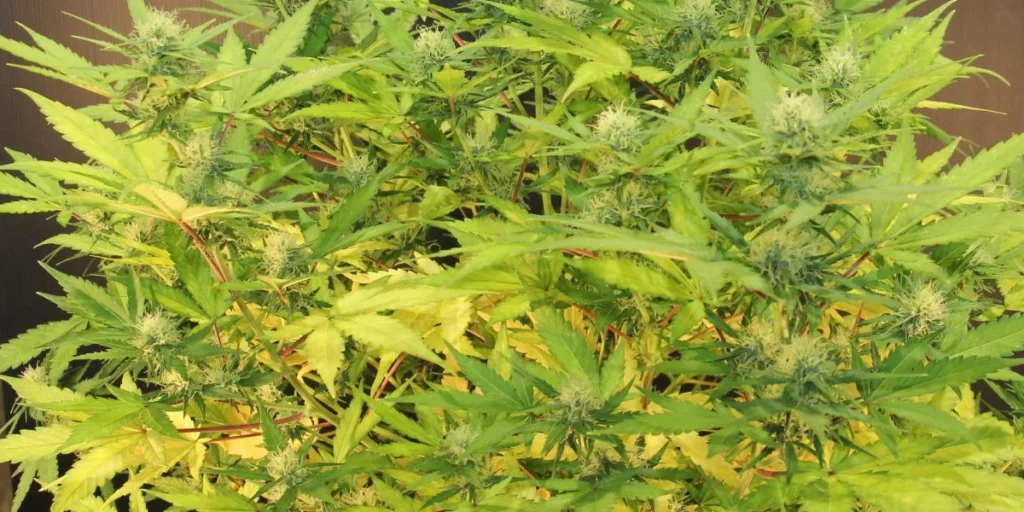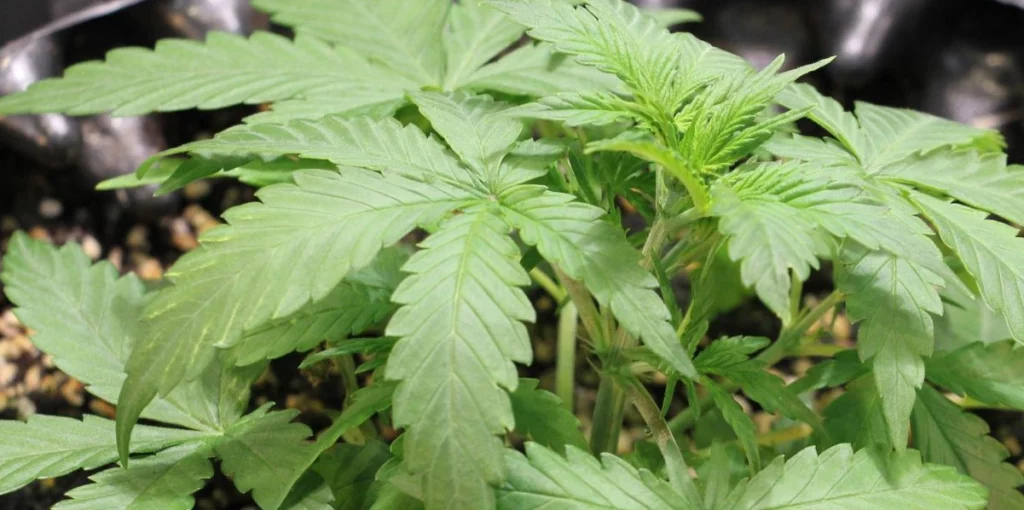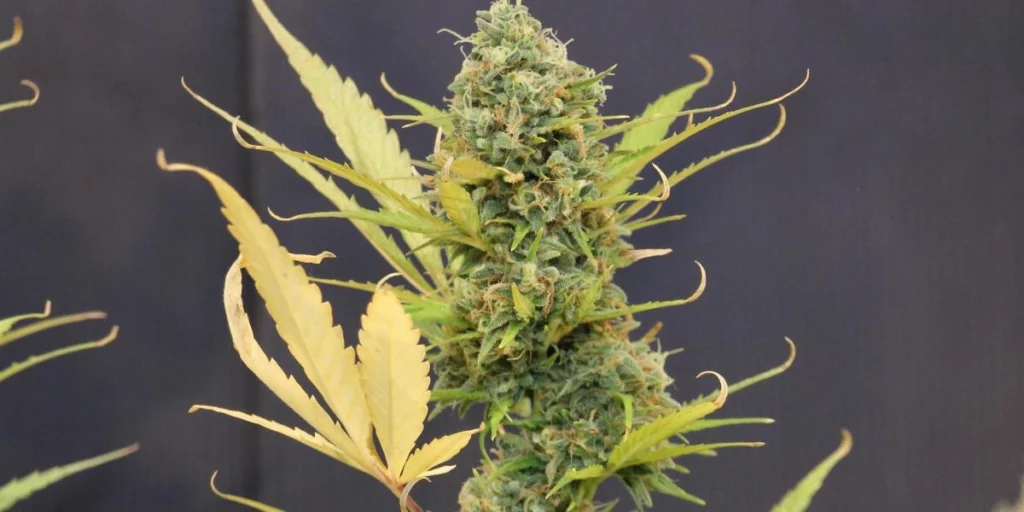Grapefruit Auto: Exceptional Genetics and Effects
Origins and Genetics
Grapefruit auto originates from a meticulously selected blend of premium genetics that infuse its lineage with vibrant citrus notes and robust growth characteristics. Its auto-flowering trait simplifies cultivation by allowing the plant to flower on its own schedule without reliance on light cycle changes. This compact plant exhibits a predictable growth pattern, ensuring consistent quality and impressive yields in every cycle, making it ideal for growers with limited space. The well-balanced genetic makeup combines the best traits of both indica and sativa, resulting in a strain that thrives in diverse environments and meets the needs of various users.
This refined genetic heritage is engineered to provide both recreational and medicinal benefits, promoting vigorous growth and resilience. Growers appreciate its dependable nature and the uniform results it delivers each time. The genetic stability of grapefruit auto strain makes it a favorite among cultivators, as it minimizes surprises and maximizes the potential for repeated successful harvests.
Effects and Potency
Grapefruit auto delivers an invigorating yet balanced high that uplifts the mind and gently relaxes the body. With THC levels maintained within a moderate range, it produces a crisp, clear-headed buzz that enhances focus and sparks creativity, while still providing a subtle calming effect on the muscles. The flavor profile bursts with fresh citrus notes complemented by herbal undertones, creating an aroma that is both refreshing and complex.
The balanced effects of grapefruit auto strain make it versatile enough for daytime use when you need energy and creativity, as well as for early evenings when you desire relaxation without sedation. Its well-rounded impact is consistently praised by both novice and experienced users who value its ability to provide a refreshing yet steady high. The overall potency is carefully managed through selective breeding and precise cultivation techniques. For those seeking similar versatility with a fruit-forward profile, Grape Sromper Fem is another standout option known for its balanced effects and rich terpene content.
Environmental Requirements for Growing Grapefruit Auto Strain
Setting Up the Growing Cannabis Space
Creating an optimal grow space is the first step to successful cultivation of grapefruit auto. A well-organized area with proper ventilation, controlled lighting, and stable temperature and humidity conditions supports the plant’s natural growth habits. Whether you choose a dedicated grow room, a grow tent, or even a small indoor setup, ensure that the space is clean and equipped with essential tools such as fans, carbon filters, and timers.
A thoughtfully designed grow space maximizes light distribution and airflow, making routine maintenance tasks like watering and monitoring far easier. When every element is in place, managing your grow becomes simpler, and the result is a robust crop of grapefruit auto that rewards your diligent attention and precision.
Temperature and Humidity
Maintaining consistent temperature and humidity levels is crucial for the successful growth of grapefruit auto strain. During the vegetative stage, it is ideal to maintain temperatures between 70°F and 80°F to promote strong, healthy growth; during flowering, slightly lower temperatures help enhance resin production and overall bud quality. Additionally, humidity levels should be kept around 50–60% during the early stages and reduced to 40–50% during flowering to prevent mold and mildew. These precise parameters facilitate efficient nutrient uptake and support a steady growth pattern, ensuring a high-quality final harvest.
Indoor Cannabis Cultivation
Advantages of Growing Indoors
Indoor cultivation offers complete control over every environmental factor, which is particularly beneficial for growing grapefruit auto. This method protects the plant from unpredictable weather and pest infestations while allowing you to precisely tailor light, temperature, and humidity conditions for optimal growth. In an indoor setup, every variable, from nutrient delivery to airflow, can be carefully managed, resulting in uniform, high-quality buds even in limited spaces.
The predictability of indoor growing also allows for year-round cultivation, independent of seasonal changes. Whether you have a compact grow room or a well-equipped tent, indoor setups ensure that every aspect of cultivation is optimized, leading to robust growth, enhanced resin production, and a final product that meets high standards of quality and potency.
Lighting Needs
Proper lighting is a cornerstone of successful indoor cultivation, and grapefruit auto strain thrives under full-spectrum LED or HPS lights. These lights provide the necessary energy for vigorous vegetative growth and strong bud development during flowering. It is important to position the lights at an optimal distance from the canopy to avoid heat stress while ensuring even light distribution across the entire plant. This careful setup promotes efficient photosynthesis and helps the plant reach its full potential, maximizing overall yield and quality.
A consistent light schedule is essential for this strain, typically using an 18-hour light and 6-hour dark cycle during the vegetative phase, followed by a 12/12 cycle during flowering. Stable lighting conditions foster the formation of dense, resinous buds and play a key role in optimizing the final harvest.
Outdoor Cannabis Cultivation
Best Conditions for Outdoor Growth
When grown outdoors, grapefruit auto flourishes under sunny, warm conditions with ample natural airflow. Choose a location that receives at least six hours of direct sunlight each day, as natural light enhances terpene development and intensifies the strain’s citrus flavor. The soil should be well-draining and enriched with organic matter to support vigorous growth and ensure high yields. A natural outdoor environment allows the plant to fully express its genetic potential.

Advantages of Growing Grapefruit Auto Strain
Fast Growth Cycle
A key advantage of grapefruit auto is its rapid growth cycle, enabling a quick transition from seed to harvest. This fast development allows for multiple cycles in a single year, making it ideal for growers with limited space or time. Its efficiency leads to timely yields and offers a practical option for busy cultivators seeking prompt results without sacrificing quality. The quick cycle also encourages continuous experimentation and refinement in cultivation techniques, ensuring every harvest is both impressive and consistent.
Exceptional Flavor and Potency
Renowned for its refreshing, citrus-infused flavor and balanced potency, grapefruit auto delivers a robust, aromatic experience with bright, tangy notes and subtle herbal undertones. Its moderate to high THC levels provide a well-rounded high that satisfies both recreational and medicinal users. The appealing taste and reliable effects ensure that every session is smooth, memorable, and thoroughly enjoyable. This distinctive flavor profile, combined with potent, balanced effects, sets grapefruit auto apart from other strains.
Problems in Cultivating Grapefruit Auto Strain
Overwatering
Overwatering is a common pitfall that can damage the delicate root system of grapefruit auto. Excess moisture leads to root rot and fungal infections that stunt growth and reduce yield. It is essential to allow the soil to dry slightly between waterings and to use containers with proper drainage in order to maintain an optimal moisture balance. Adjust your watering schedule based on the plant’s needs rather than following a fixed routine, and regularly check soil moisture to avoid overhydration.
Pest Infestations
Pests such as spider mites, aphids, and thrips can quickly undermine the health of grapefruit auto if left unchecked. Regular inspections and the use of organic pest control measures help keep these threats under control. Early detection and prompt treatment are crucial to preventing widespread infestations that could compromise yield and quality. Implementing natural predators and organic sprays provides an effective method for managing pests, and vigilance is key to safeguarding the plant’s development.
Similar Strains Grapefruit Auto
Orange Bud Auto
Orange Bud Auto is a compact auto-flowering strain that offers a zesty, citrus-infused flavor and a balanced high. Its fast flowering cycle and dense, resinous buds make it ideal for small grow spaces, and its predictable yield makes it an excellent alternative for growers seeking qualities similar to grapefruit auto.
Tangerine Dream Auto
Tangerine Dream Auto delivers an uplifting experience with a bright, tangy flavor that mirrors the refreshing citrus character of grapefruit auto. Its auto-flowering trait ensures a swift cycle and abundant production, making it perfect for limited spaces. The strain’s vibrant effects and aromatic buds provide a delightful sensory experience that is well-suited for those looking for a citrus burst similar to grapefruit auto.
Lemon Haze Auto
Lemon Haze Auto stands out with its bold, tangy flavor and balanced effects that combine mental clarity with gentle relaxation. Its compact growth and rapid flowering make it ideal for indoor setups, and its unique taste profile offers an invigorating alternative for growers seeking similar qualities to grapefruit auto. The strain delivers a consistent, refreshing experience that appeals to both recreational and medicinal users.
Week-by-Week Growth Plan for Grapefruit Auto Strain
Week 1 – Germination and Seedling Stage
Begin by soaking grapefruit auto seeds to initiate germination, placing them between moist paper towels in a warm, dark spot until taproots emerge, typically over several days. Once the taproots are visible, carefully transfer the seeds to a small pot with a well-draining medium. This stage sets a strong foundation for healthy growth; maintaining a consistent, warm, and humid environment is critical for encouraging early development and establishing a robust root system that will support all future growth.
Week 2 – Early Seedling Growth
In week two, the seedlings begin to show their first true leaves and gradually increase in size as they adapt to their new environment. Provide gentle, indirect light while gradually increasing exposure to support robust photosynthesis. Ensure that the soil remains moist but not waterlogged, maintaining a stable, warm environment that promotes healthy development. This period is critical for building the initial strength of the plants and setting the stage for future rapid growth.
Week 3 – Seedling Development Continues
During week three, the seedlings continue to grow larger and develop a more extensive root system, while additional sets of leaves begin to emerge. Gradually increase light exposure and maintain a balanced watering schedule to support steady and healthy development. This stage is essential for strengthening the plant’s overall structure and preparing it for the vigorous vegetative phase that follows.
Week 4 – Vegetative Growth Begins
At the start of week four, the plant enters the vegetative stage with noticeable increases in size and vigor. Leaves expand and stems thicken as the plant establishes a solid framework that will support future bud formation. Adjust the light intensity and begin a structured watering schedule, using a low dose of nitrogen-rich fertilizer to encourage rapid vegetative growth. This phase marks the shift from fragile seedlings to a robust plant with a clear potential for high yield.
Week 5 – Accelerated Vegetative Growth
During week five, vegetative growth accelerates as the plant expands rapidly, producing increased foliage and developing stronger branches. Continue regular feeding and maintain a steady watering schedule while introducing gentle training techniques such as low-stress training to manage the canopy effectively. This phase is crucial for building a resilient structure that will later support heavy bud development during flowering.
Week 6 – Preparing for Flowering
In week six, early signs of the flowering phase begin to emerge as small bud formations appear and subtle changes in leaf coloration are observed. Adjust the nutrient regimen by reducing nitrogen levels and increasing phosphorus and potassium to support bud initiation. Continue employing low-stress training and closely monitor environmental conditions to avoid any stress during this sensitive preparatory period. This stage is critical for setting the foundation for high-quality bud development in the coming weeks.
Week 7 – Transition to Flowering
Week seven marks the clear transition into the flowering phase. Indoor growers should switch to a 12-hour light and 12-hour dark schedule, prompting grapefruit auto to shift its energy toward bud production. Small buds begin to appear as the plant diverts energy from vegetative growth to bloom formation. Adjust nutrient schedules to favor bloom-specific supplements while reducing nitrogen levels, ensuring a smooth transition.
Week 8 – Early Flowering
During week eight, the early stages of flowering become pronounced as buds form and begin to increase in density. The plant channels more energy into developing thick clusters, and nutrient delivery is adjusted to favor phosphorus and potassium to support bud growth. Monitoring for any signs of stress or nutrient deficiency is key during this stage to ensure optimal development.
Week 9 – Mid-Flowering
In week nine, the buds become more prominent as resin production increases and trichomes begin to form, gradually shifting from clear to milky. Nutrient management is carefully adjusted to support robust bud development while avoiding the risk of nutrient burn. Frequent inspections during this pivotal stage ensure that environmental conditions remain optimal and that the plant is developing as expected.
Week 10 – Bud Development
By week ten, the buds are well-formed and continue maturing in density and size. The plant’s resin production intensifies, and the aromatic profile becomes increasingly pronounced. Maintain careful nutrient management and stable environmental conditions to support full bud development, ensuring every bud reaches its optimal potential. Regular observations and timely adjustments at this stage are essential for preventing setbacks and maximizing the final quality.
Week 11 – Late Flowering
In week eleven, the plant enters the late flowering phase, with trichomes beginning to shift further to include some amber hues. Buds become denser and more resinous, signaling that the optimal harvest window is near. Continue to maintain balanced nutrient delivery and stable environmental conditions to support the final burst of bud maturation. Frequent checks during this stage help address any last-minute issues and consolidate the overall quality of the crop.
Week 12 – Harvesting Time
Week twelve is when the plant is ready for harvest. At this point, trichomes display a mix of milky and amber hues, and the buds are dense and covered in resin. Carefully cut the plant and trim off excess foliage, then hang the branches in a dark, well-ventilated space to dry for 7–10 days. This drying phase is essential for preserving both the flavor and potency of the buds while preparing them for the curing process.
Week 13-14 – Curing the Buds
During weeks thirteen and fourteen, focus on curing the harvested buds to enhance their flavor and potency. Once the buds have dried, transfer them into airtight glass jars and open the jars daily during the first week to release excess moisture, gradually reducing the frequency over the following week. This careful curing process allows the buds to stabilize and develop a smoother, richer profile that maximizes the sensory qualities of the final product.

FAQs about Grapefruit Auto Strain
What is the typical THC content of grapefruit auto?
Grapefruit auto typically contains THC levels ranging from 15% to 22%, offering a balanced high that provides an energizing buzz with subtle body relaxation. This consistent potency is achieved through careful breeding and precise cultivation practices, ensuring each harvest delivers a refreshing yet satisfying experience for both recreational and medicinal users.
How long does it take for grapefruit auto to flower?
Grapefruit auto generally flowers within eight to ten weeks after the switch to a 12/12 light cycle. This relatively short flowering period is ideal for growers seeking quick turnovers and efficient production. The auto-flowering trait ensures a smooth transition from vegetative growth to bloom, resulting in consistent yields that make it especially attractive for cultivators with limited space or time.
What flavor profile can I expect from grapefruit auto?
Grapefruit auto offers a refreshing, citrus-infused flavor profile characterized by bright, tangy notes and subtle herbal undertones. Its aromatic buds deliver a smooth, crisp taste that is both invigorating and memorable, providing a sensory experience that complements the strain’s balanced, uplifting effects and makes it a favorite among those who appreciate a burst of citrus in every session.

